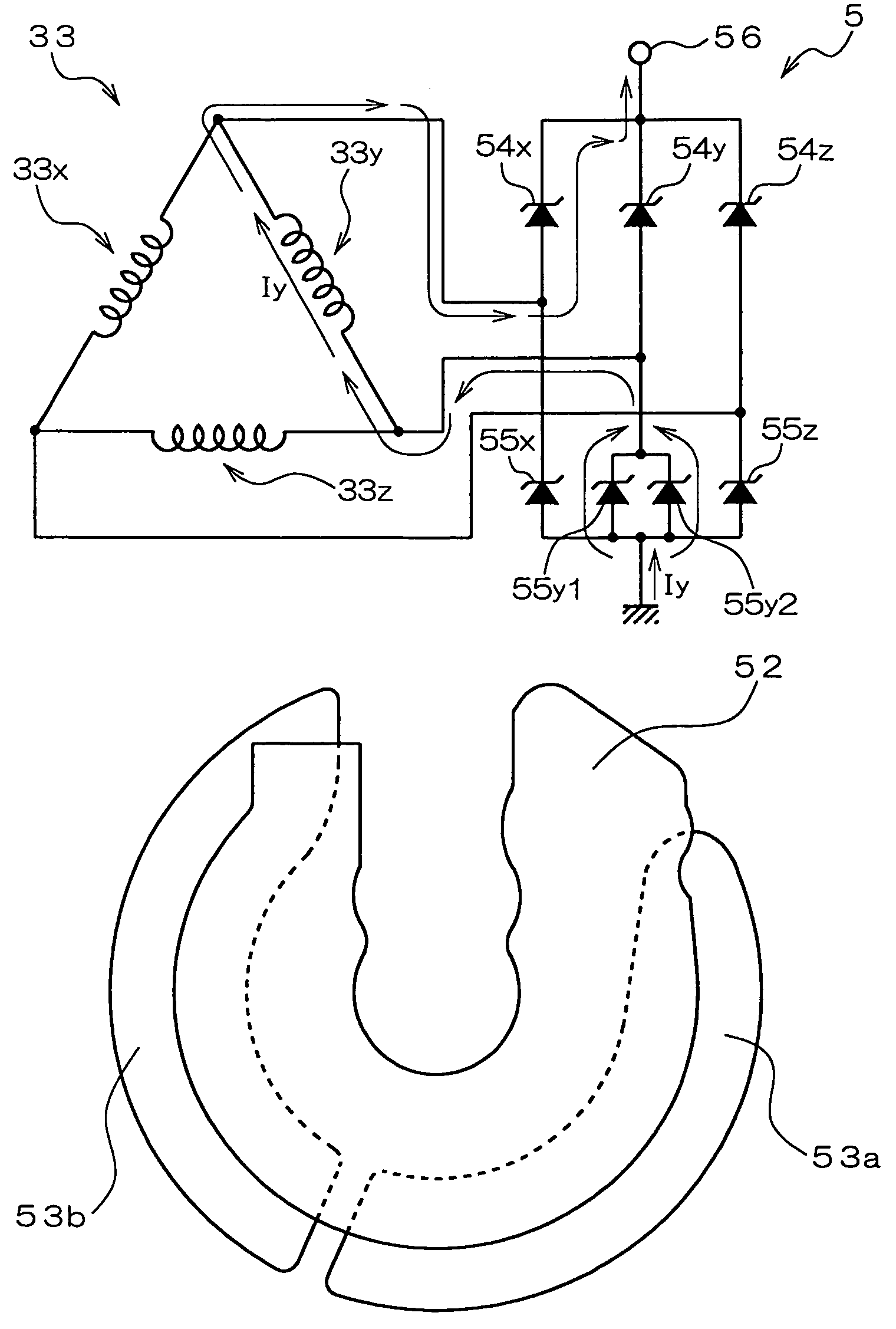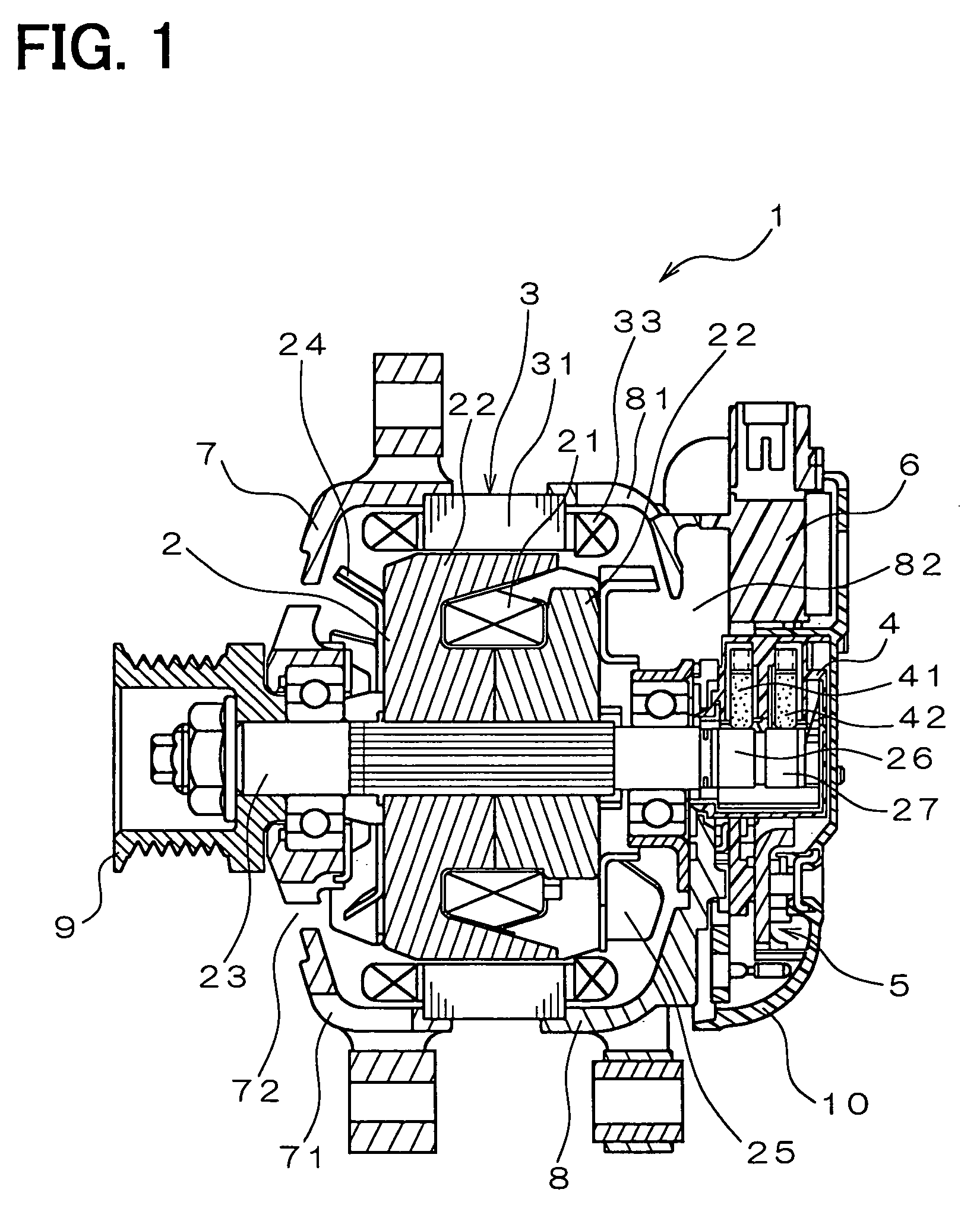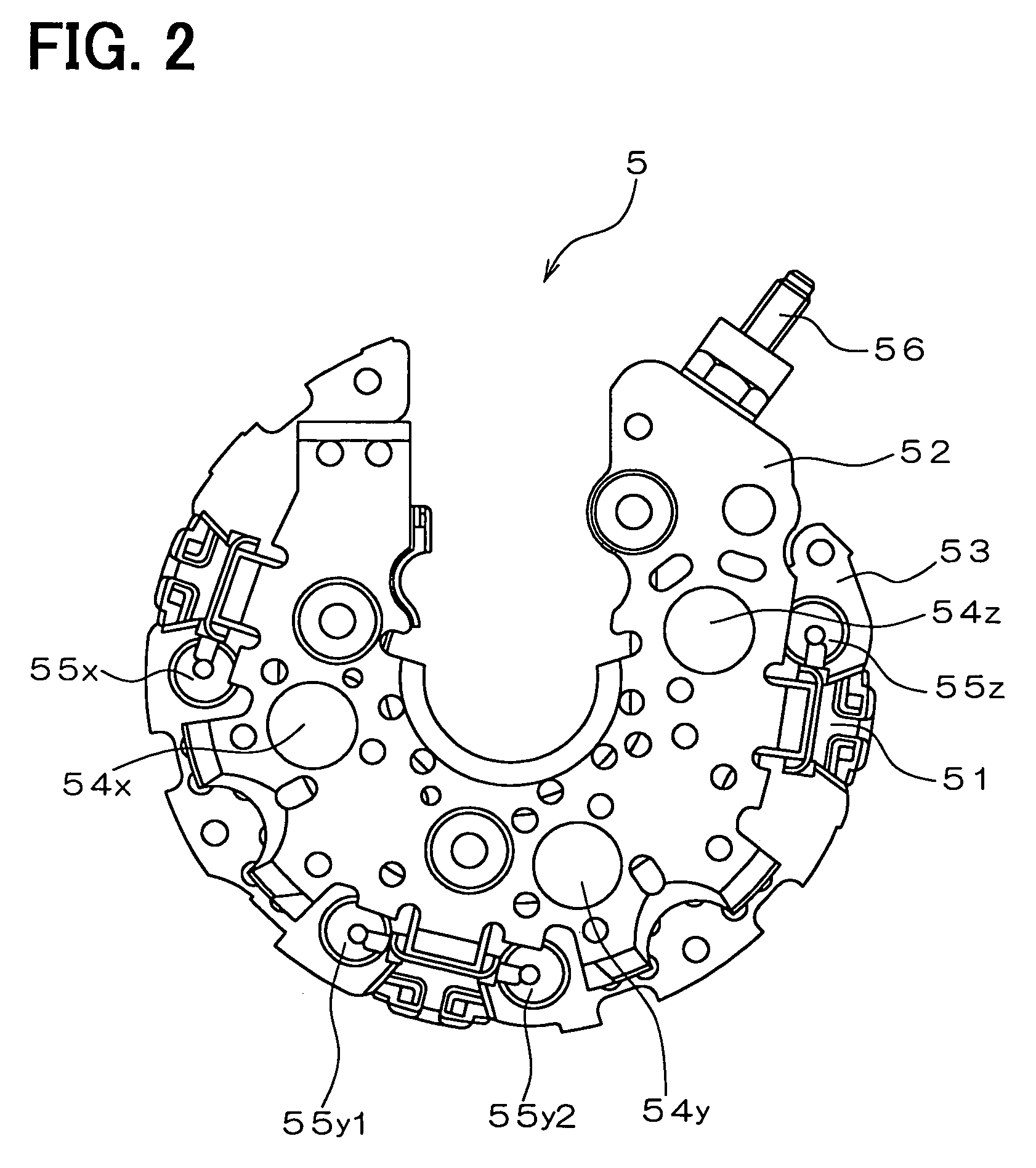AC generator for vehicle having rectifying unit
a technology of rectifying unit and ac generator, which is applied in the direction of dynamo-electric converter control, magnetic circuit shape/form/construction, rotating parts of magnetic circuit, etc., can solve the problems of increasing the temperature of the engine compartment, increasing the power consumption of the vehicle, and increasing the temperature of various parts, so as to reduce the temperature rise of the rectifying unit and reduce the production cost. , the effect of reducing the temperature ris
- Summary
- Abstract
- Description
- Claims
- Application Information
AI Technical Summary
Benefits of technology
Problems solved by technology
Method used
Image
Examples
Embodiment Construction
[0035]An ac generator for a vehicle according to a preferred embodiment of the invention will be described with reference to the appended drawings.
[0036]FIG. 1 is a cross-sectional view of an entire body of the ac generator for a vehicle according to the preferred embodiment of the invention, which has an internal cooling fan. As shown in FIG. 1, the vehicle ac generator 1 includes a rotor 2, a stator 3, a brush unit 4, a rectifying unit 5, an IC regulator 6, a drive frame 7, a rear frame 8, a pulley 9, a rear cover 10, etc.
[0037]The rotor 2 has a field coil 21 of a cylindrically wound insulated copper wire and a pair of pole cores 22 each of which is fixed together by a rotary shaft 23 to sandwich the field coil and has six claw poles surrounding the field coil 21. An axial flow type cooling fan 24, which takes in air from a front portion of the ac generator and sends out the air in axial and radial directions, is fixed by welding or the like to the front one of the pole cores 22 a...
PUM
 Login to View More
Login to View More Abstract
Description
Claims
Application Information
 Login to View More
Login to View More - R&D
- Intellectual Property
- Life Sciences
- Materials
- Tech Scout
- Unparalleled Data Quality
- Higher Quality Content
- 60% Fewer Hallucinations
Browse by: Latest US Patents, China's latest patents, Technical Efficacy Thesaurus, Application Domain, Technology Topic, Popular Technical Reports.
© 2025 PatSnap. All rights reserved.Legal|Privacy policy|Modern Slavery Act Transparency Statement|Sitemap|About US| Contact US: help@patsnap.com



